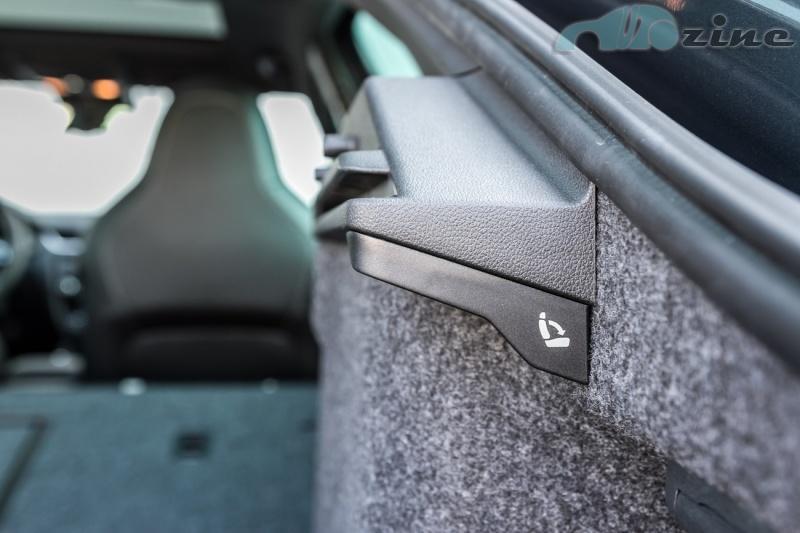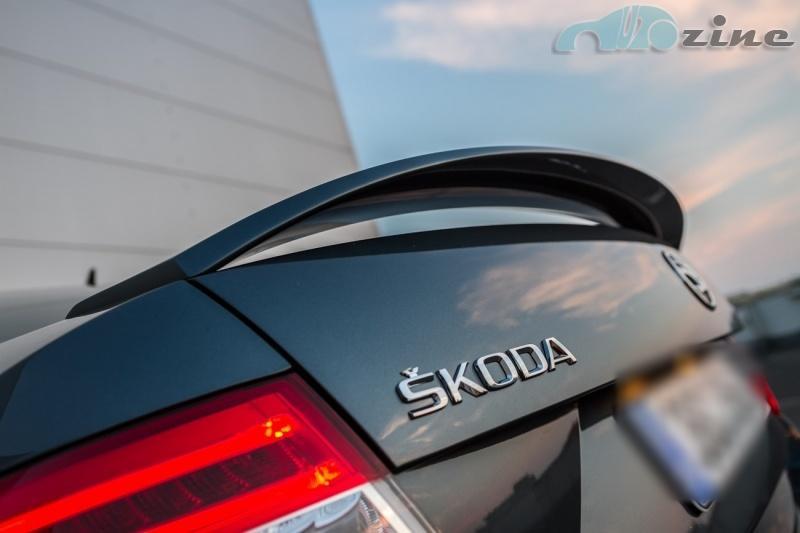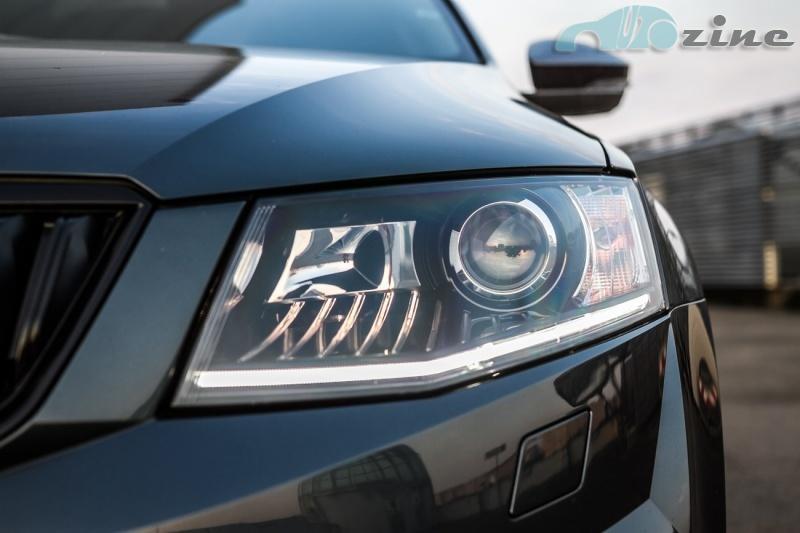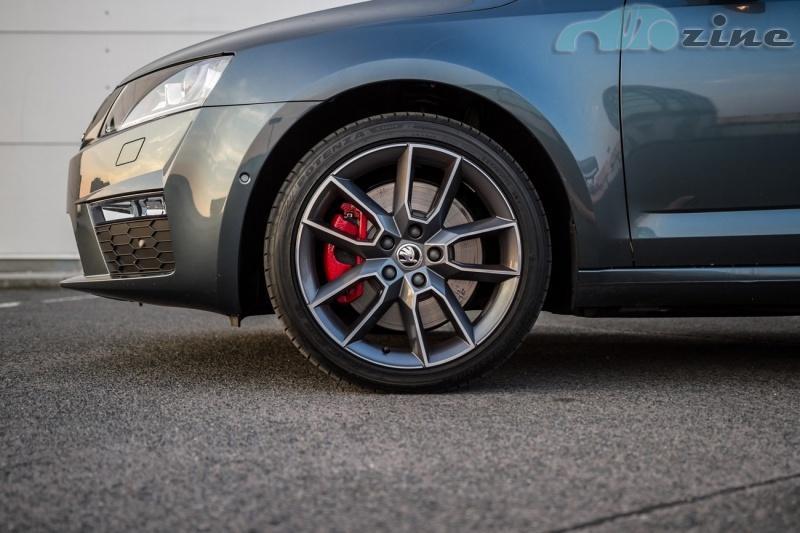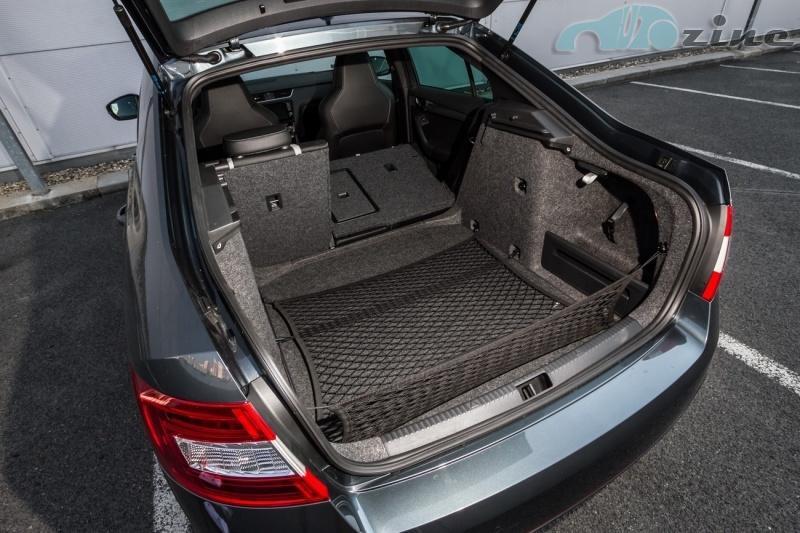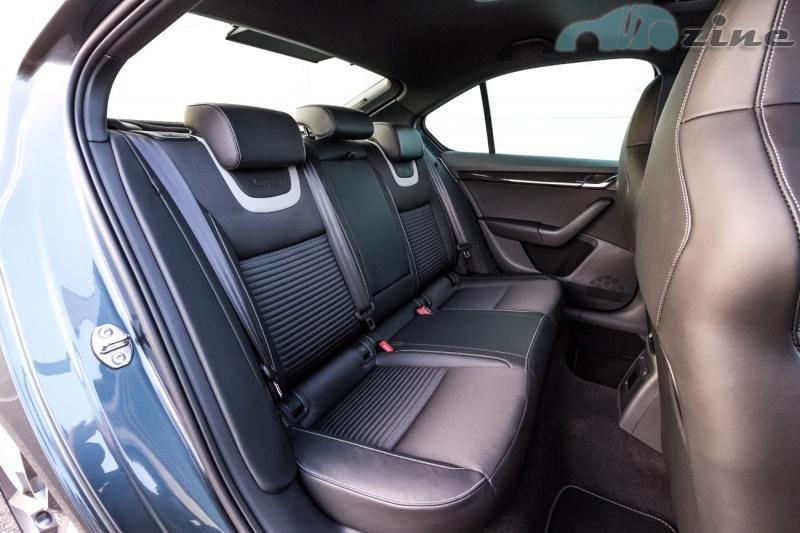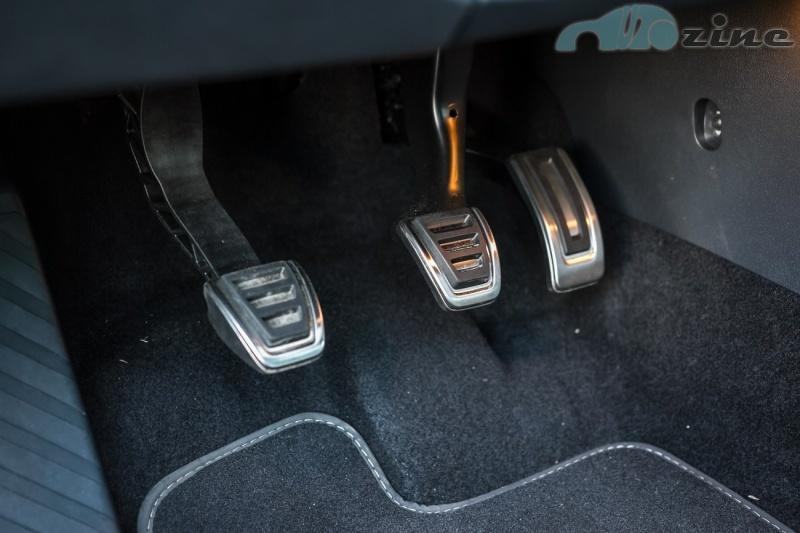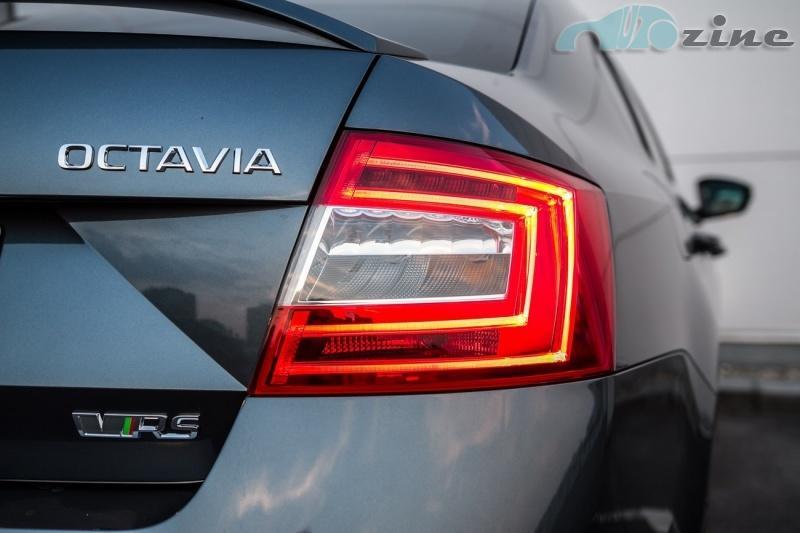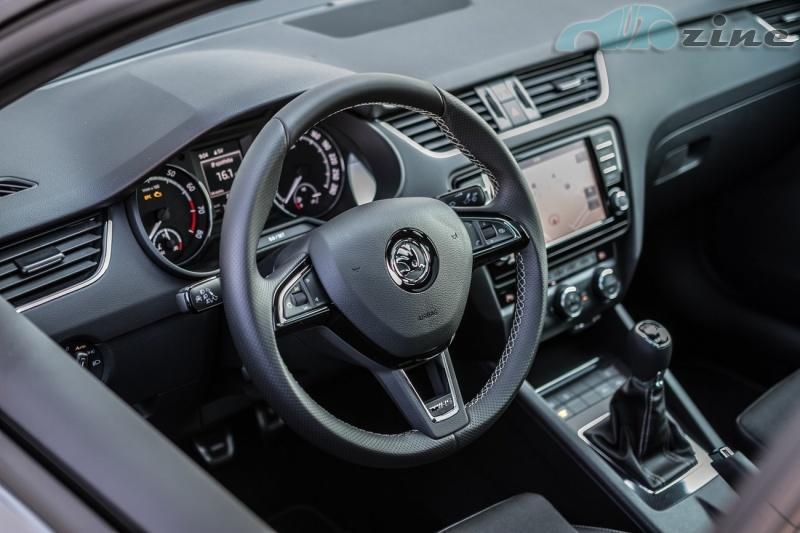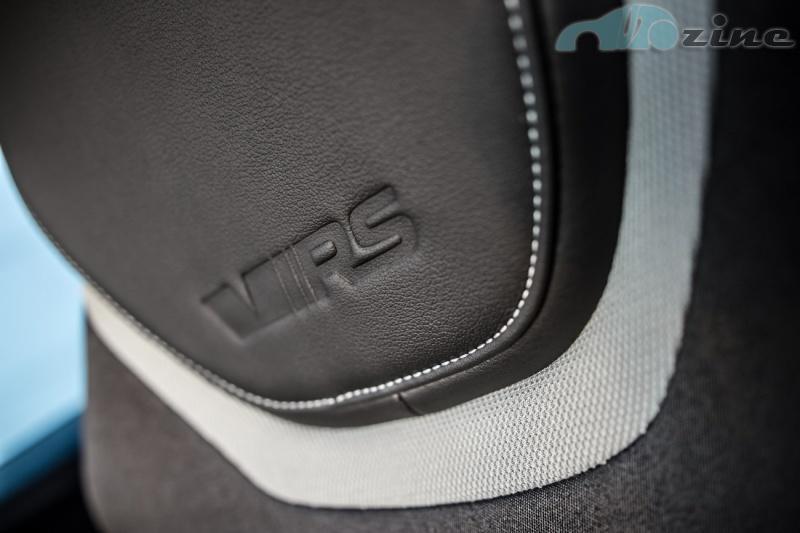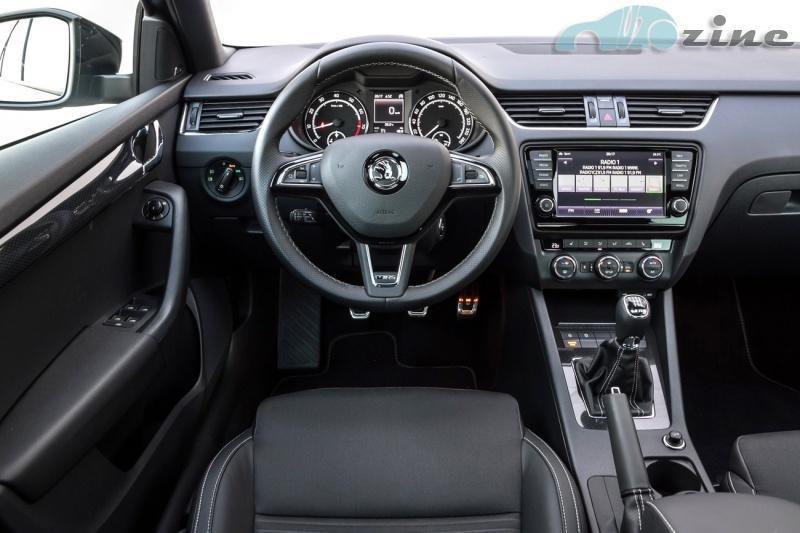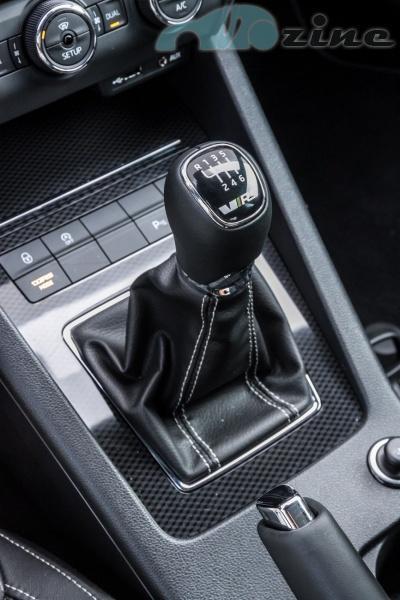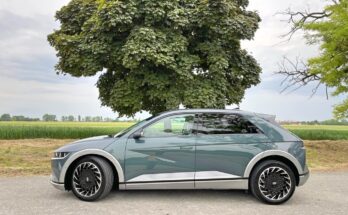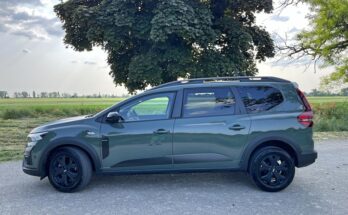Discussions on motoring websites are surprisingly often overflowing with hatred for the company's cars. Paradoxically, the most anger usually flows towards the domestic brand
Yes, it can be partially understood. Skoda cars are by far the best-selling cars on the Czech market, they are on every corner, and what has the most, naturally also has the most detractors. Škodovka is the biggest "mainstream" in the Czech Republic, which is why it gets it from those who want to stand out from the crowd in their opinions. After all, a motoring "expert" cannot smell what even most mortals smell. A "connoisseur" begs to differ… Yes, I understand that the exaggerated "sporty" status of the first two generations of Octavia RS may seem like a red rag to a bull to many motoring enthusiasts. The first generation with a trailing axle and a short wheelbase was able to excite only those who imagine performance in a straight line under the term "sporty". The second generation was no better with "sportiness" despite the use of multilink. But times are changing, and the Octavia RS of the third generation has enough to make even the fanatical opponents of the brand convert to a winged arrow and pray five times a day in the direction of Mladá Boleslav .

I have already passed through all the engines and configurations of the new Octavia, but the RS still eluded me. When I had the opportunity to test the "fastest Skoda ever" in the (for me) ideal configuration (liftback, TSI, manual transmission), I didn't hesitate for a moment. How did I arrive at the "ideal configuration"? Quite simply. I became clear about the motorization preference when I had the opportunity to test the RSka's blood brothers, the Golf GTI and the GTD . In principle, I have nothing against the diesel version, but the TSI only takes about 2 liters more per hundred on average, and at the same time it is much faster and, above all, a lot more fun. I would also be clear when choosing a gearbox. Objectively, there is not much to object to the DSG of the last generation, but the company's manual is traditionally so good that paying extra for a double clutch in a sporty car seems pointless to me. Likewise, I find it a bit pointless to pay extra for the Combi version, when the liftback also offers a huge trunk (590 l). Of course, there will be many who will be much more comfortable with the exact opposite of how I would configure Octavia. Some like to exchange sportiness for economy and the less frequent need to go to the gas station, they like to leave the tiring gear shifting to the automatics, and they often use the extra few tens of liters in the trunk in the station wagon . It's good that RS offers so many options. Each option makes sense.
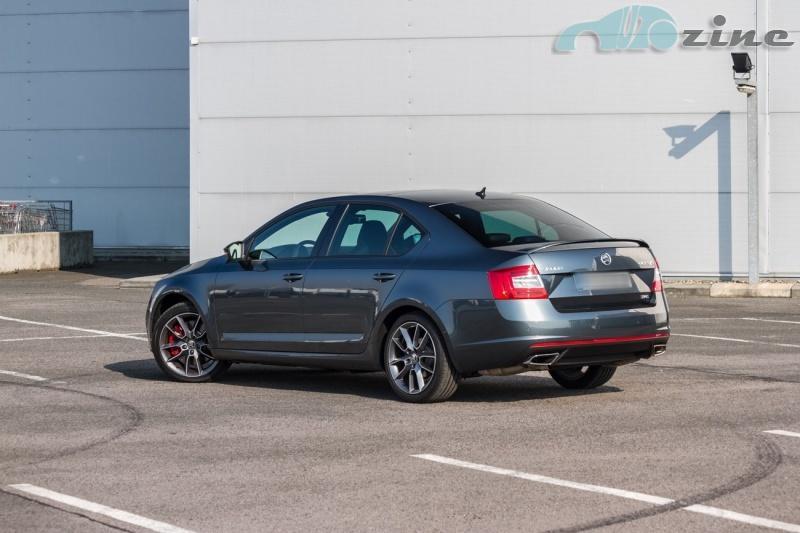
Design – one of the prettiest Skoda cars today, but with dubious details
The tested RS was waiting for me in gray metallic and I immediately changed my color preferences. Until now, I liked RSko the most in Corrida red (+ CZK 4,000) or in blue metallic (+ CZK 13,900) with a black design package (I would recommend it for an extra charge of only CZK 800 for any color variant), but the gray metallic is now in my eReSu catches the eye the most. Some design elements feel a bit cheap, but that's unfortunately common in this price range. An unnecessary rear wing, a strange reflector in the rear bumper, fake air intakes in the front bumper or a rear "diffuser" seem fair, but they can be accepted. But personally, I am most bothered by the overstylized exhaust tips. How much more serious would RSko look with the ordinary double tailpipe that the previous generation had… But overall, the fast Octavia looks even better than the regular ones, which certainly don't need to be ashamed of their appearance.
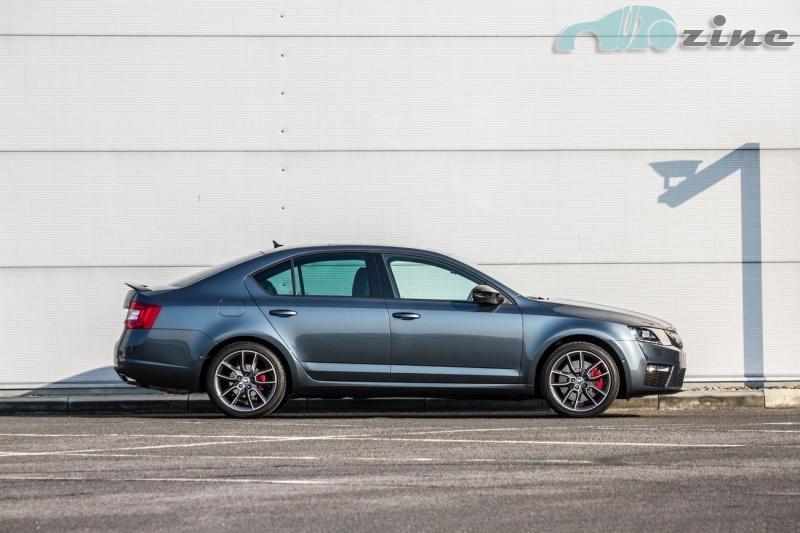
Interior – practical and high-quality
My impressions of the interior are also entirely positive. The only thing I would complain about is the overall gloom and not very tasteful decor remotely reminiscent of the carbon structure. It's a shame that you can't order the RSko with a beige interior and silver decor, which is available in the Elegance trim and can illuminate the interior beautifully. The steering wheel fits perfectly in the hand, has an ideal diameter and thickness, and the fine stitching does not chafe your hands. However, what I appreciate most about it is that it is not flattened. At a time when Volkswagen is putting flattened steering wheels in its MPVs as well, the round steering wheel in eReSk is a welcome breath of common sense in the group's policy. So he was… According to the latest information, the RSko will be equipped with a flattened steering wheel in the series… Fortunately, great seats that perfectly combine comfort with sufficient lateral guidance remain. Although they have an integrated headrest without the possibility of adjustment, only individuals with a height of over 2 meters can feel this as a limitation. The pedals will not please those who like to downshift with intermediate gas. The brake and gas are relatively far apart. In addition, their rubberization does not extend far enough to the sides, so it can easily happen that your foot slips when passing gas. The interior design is traditionally at a very high level. The only flimsy-looking controller on board the tested piece is from the additional panoramic sunroof (+20,000 CZK), which, in my opinion, has no business in the sporty Octavia anyway. It reduces the torsional stiffness, adds weight at the highest point of the body, and sometimes, although almost inaudibly, but still a little, it rattles. However, I have never registered these sounds in any other Octavia equipped with a panoramic window, so perhaps this is just a defective piece or a memory of the circuitous rampage of one of my fellow journalists. There is of course plenty of room inside. At my height of 190 centimeters, I sit behind myself with a lot of reserve. In the spirit of the slogan "Simply clever" , you will find a network program in the trunk, an electrical socket in the interior, a lot of storage boxes, drink holders, mobile phone holders, and other practical solutions. In this, the Octavia does not compete with many MPVs. I also have to mention the perfect armrest with a sufficient range of height and length adjustments. I don't understand why the vast majority of manufacturers still only offer insufficiently or completely non-adjustable armrests.
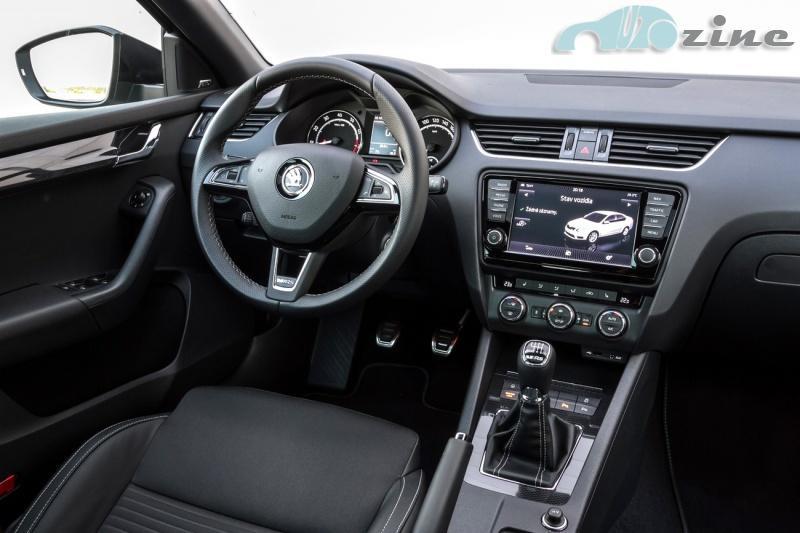
Engine and transmission – characterful engine, perfect shifting
After pressing the start button ( "KESSY" – keyless unlocking, locking and starting + CZK 10,000) and settling the revs at idle, the engine will not give you any indication of its potential yet. However, you only need to rev the engine a little and you will be surprised by its sound. It's such a strange mix of a four-cylinder boxer, a flat-eight and a turbodiesel rumble. Coupled with the hiss of the intake, the blow-off valve and the screech of the turbo, it's a very entertaining soundtrack. It's a bit fake though. The designers placed an electromagnetic pulse generator on the front wall of the engine compartment. Sound vibrations are transmitted to the interior through the bodywork and windshield. The intensity of the added sound depends on the engine speed, the position of the gas pedal and the selected driving mode. In Normal mode, it looks natural and pleasantly predatory. In Sport mode, however, it suddenly loses its naturalness. Especially the rumble when accelerating from low revs sounds very artificial and exaggerated. Only in Eco mode is the Sound Generator completely switched off, and it must be added that even without its help, the unit sounds very good. All three driving modes have their settings fixed and cannot be changed. The fourth Individual mode is used for user settings. You can individually set the properties of: Engine, Start-Stop system, power steering, adaptive cruise control, adaptive AFS headlights , tightening of seat belts (Crew protect assistant + CZK 11,000), air conditioning and, in cars equipped with DSG, also transmission and freewheel. Despite what we've been told otherwise, the "Engine" item doesn't just change the Sound Generator settings. In the editorial office, we agreed that it obviously changes the reaction to gas as well. I would therefore like it if the Sound Generator and engine settings were separate and it was possible to set sharp throttle responses without having to listen to the unnatural sounding Sound Generator in sport mode.

Although the performance has only increased by 20 horsepower compared to the previous generation and it has the same volume, it is a completely new unit from the EA888 series. The engine lacks a significant power peak , but it certainly does not run out of breath even in the highest rev range and is pleasantly urgent throughout the rev range. The response to adding gas at lower revs is not immediate, but with a sporty driving style you hardly notice the delays. Flexibility is another nice feature of the new engine. Already at fifty kilometers per hour, you can engage sixth gear and the engine will accelerate without protest up to a maximum speed of 248 km/h. At a highway speed of 130 km/h, the engine spins at 2,900 rpm. And it consumes an average of 7.7 l/100 km . We also drove the RS on German highways (mainly flat profile) and there it took 10 l/100 km at a speed of 160 km/h, which is a great value for a turbocharged two-liter gasoline engine. At a speed of two hundred kilometers, the consumption already climbed to 14 liters per hundred, which is still a no less dazzling number. However, if you try to reduce consumption below the six-liter limit, you will fail. With the 1.8 TSI, it is possible to reduce fuel consumption in the district to 5.5 l/100 km while observing speed limits. With the RS, under the same conditions, you will consume at least one liter more, which is not surprising. Shifting and transmission cannot be faulted. Individual speeds fit into precisely defined tracks with minimal effort. Sorting can be done very quickly.
Driving – the ideal compromise
The performance and sound will thrill you, but it's the corners that will put a smile on your face. Compared to the previous generation, the RS has lost a little over a hundred kilograms, and you can recognize this newly acquired lightness right from the first faster corner. No production SKODA has ever turned so well. You can only experience understeer if you grossly exceed the approach speed. Otherwise, the car is exemplary neutral and the non-switchable ESP even allows you to turn the rear slightly . The stabilization system is so unobtrusive in the "Sport" mode that few will miss the impossibility of fully deactivating it. RSko was the first model of the brand to receive steering with a variable ratio with 2.11 revolutions from stop to stop. Fortunately (compared to e.g. BMW's variable steering) it is a mechanical system (different geometry of the rack and pinion teeth), where the electronics only smooth transitions in gear changes via the electric motor on the second pinion of the steering. It looks completely natural when driving. The steering is precise , sensitive and fast enough. The electromechanical booster is one of the best. Although it is far from the best hydraulic systems, it still sends enough information into the hands of the driver. The XDS Plus system, or "electronic substitute for the limited slip differential", is a useful helper especially in reduced adhesion conditions. It can effectively increase traction when exiting corners and thus mitigate the biggest disadvantage of the front-wheel drive concept. It didn't rain even once during the RSka test, but even in sharp turns in the dry you will feel its benefit. At high speeds, where in theory the XDS system can cause more problems than benefits due to its principle (preventing wheel slippage by braking), I did not feel its negative effects even when attacking maximum speed in corners on German highways. However, according to the experience of a colleague whom I respect very much, the negatives of the system only become apparent when driving at the limit on a circuit, where braking the inner wheel can lead to a tightening of the track, which then requires a slight correction from the steering wheel. Although I cannot confirm this behavior, I definitely consider it a bug that the system cannot be deactivated. Another area where the RS scores points is the brakes. No matter how hard I tried, I couldn't tighten the brakes . According to the experience of the mentioned colleague, the brakes are not a problem even on the circuit, which can be considered a small miracle. Testing the eReSa at the Nürburgring during its development was apparently not just a marketing exercise.
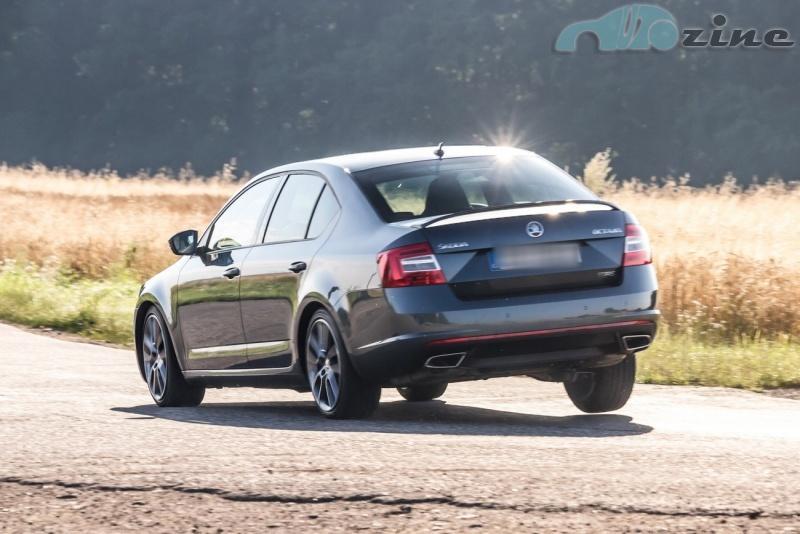
However, the area where RSko surprised me the most is the tuning of the chassis. Many sport-cut compacts have big problems on the Czech leaky districts. They usually have a chassis tuned too hard and often bounce on bumps in corners. The previous generation of the RSka was also skittish and jumpy. Fortunately, the chassis of the new Octavia RS plays in a completely different league. The chassis is of course stiffer than the standard Octavia, but even on the additional eighteen-inch Gemini wheels (+ CZK 5,100) it filters out bumps better than any compact hot hatch. The difference in comfort between the RS and the other versions with multilink (1.8 TSI or 1.4 G-TEC) is barely noticeable. The Octavia, equipped with a trailing axle and wheels of the same size, even significantly surpasses the RS in terms of driving comfort.

Conclusion – a historic success
Basic price test. of the car (Skoda Octavia RS 2.0 TSI): CZK 631,900
Price of the tested car including surcharges: CZK 875,200
Pros:
-Drive ability
-Chassis tuning suitable even for roads with a bad surface
-Engine characteristics and consumption
-Precise sorting
– Spacious trunk, practical storage spaces
– Processing and equipment
– Favorable purchase price
Cons:
-Inability to turn off XDS
-Inability to set the Sound Generator independently of the engine mode
-Unnecessary "sports" decorations
Photo: David Rajdl ( http://rajdlstudio.com ) and Klaudie Najmanová





